By
Priyanka Gupta
1.0 Introduction
In small residential buildings the quality of construction is seldom questionable. The reason varies from poor building material quality to lack of knowledge of good construction practices. Most of the times, engineers are ignored by individual house owners and masons are given sole responsibility of both design and construction. Almost all structural engineers practicing in India will agree that 99% of the failures of structures in India are not due to design failure.
Explaining the different aspect of construction that a normal home builder, engineer or contractor needs to remember.
2.0 Case 1: G+1 Building in Calicut, Kerala
Observation month: October, 2015
Site condition : Good quality soil, 1 km from sea coast
Observation : Excessive rust in dowel rebars in column
Investigation : The foundation was completed 3 months back and the dowels were exposed to atmosphere unguarded for 3 months in the rainy season.
Precaution to be taken : If a rebar or dowel is kept exposed, it should be covered with cement sand slurry and the coating needs to be applied every fortnight.
3.0 Case2: G+1 Building in Auraiya, UP
Observation month : November, 2015
Site condition : Good quality soil, No engineer consulted
Observation : Poor workmanship (Improper transfer of load due to poor centering)
Investigation : The centering was done by a normal mason and proper techniques were not used. Also due to congestion of rebars at beam column junction the mason avoids compaction which leads to honeycombing.
Precaution to be taken : Centering has to be done by training centering masons and site supervision by engineers is necessary during foundation centering, casting and casting at every slab. Compaction needs to be done homogenously at every stage of construction.
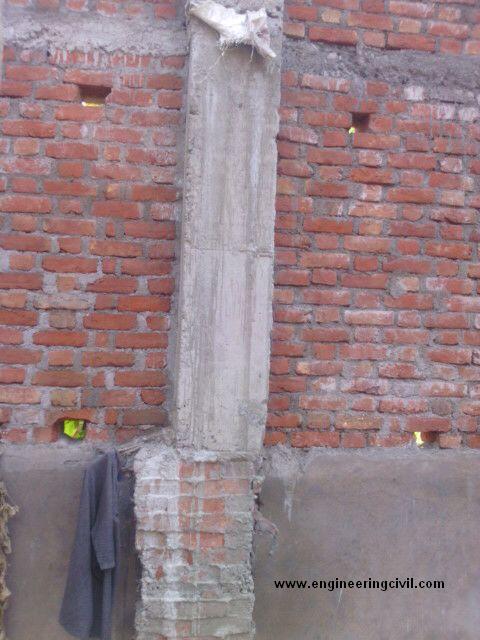
The upper concrete column is not aligned with the lower brick pedestal. This leads to unequal load transfer and added stress at the junction.
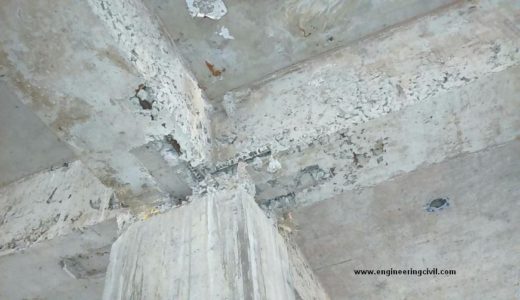
Honeycombing due to improper compaction
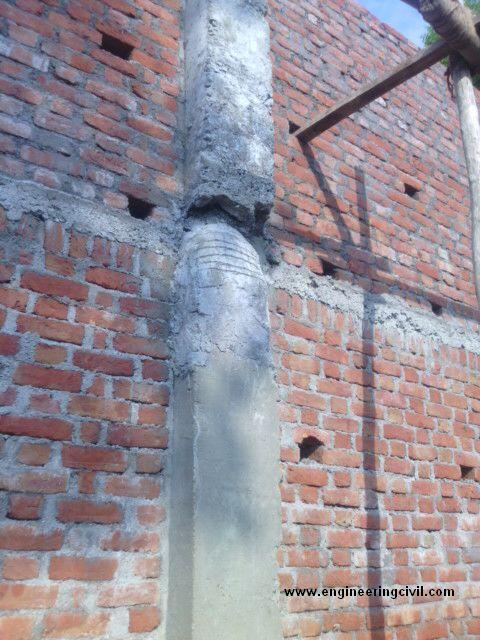
Reinforcement continuation at beam-column junction
4.0 Case3: G+2 Building in Abohar, Punjab
Observation month : August, 2015
Site condition : Good quality soil, designby engineer ignored during construction
Observation : Poor concrete mix and water quality
Investigation : The water quality was not checked before use. After testing it was found that the concrete did not achieve the desired strength of 20 MPa due to poor quality of concrete mix and water.
Precaution to be taken : The quality of all building material (cement, stonechips, sand and water) needs to be checked before mixing. Also the pH of water should be more than 6, i.e. not acidic. Any deviation from design should be approved by the structural engineer.
5.0 Case4: G+5 Building in Dhanu, Maharashtra
Observation month : August, 2015
Site condition : Good quality soil, 1 km from sea coast
Observation : Deep cracks in ground floor columns and concrete chipping all over the building
Investigation : Beach sand (high salinity) was used for construction. Also ground water (without chemical testing done) was used in concrete.
Precaution to be taken : The quality of building materials should follow the quality norm as mentioned in IS 456: 2008 Section 2. The detail is given in the chart.
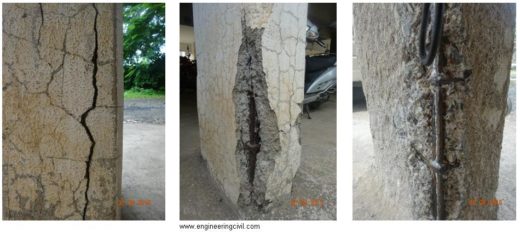
Deep cracks formed. Rebar gets exposed.
6.0 Case5: G+9 Building in Ahmedabad, Gujarat
Observation month : August, 2015
Site condition : Good quality soil, Good construction quality, no soil testing done
Observation : Column bars bent due to sudden thunder storm and landslide
Investigation : The soil was not tested before construction. Hence when sudden thunderstorm came and flooding at site occurred, the soil of straight cut walls failed and the landslide occur.
Precaution to be taken : Soil has to be tested for both chemical properties and strength before design and construction starts. The side wall of excavated site should have a slope of more than 30 degrees. In case of weak soil, micro pile or wooden sheet pile needs to be used to arrest soil.
We at engineeringcivil.com are thankful to Er Priyanka Gupta for submitting this very important paper to us.
If you have a query, you can ask a question here.



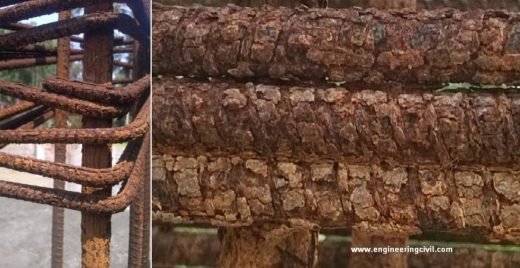
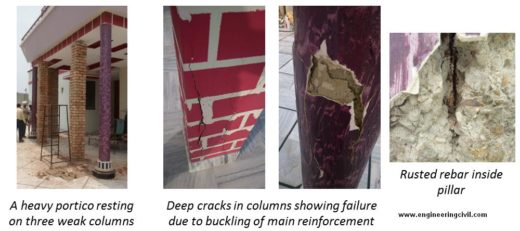
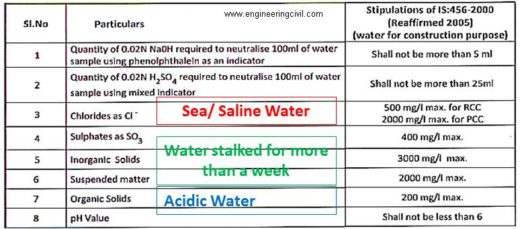
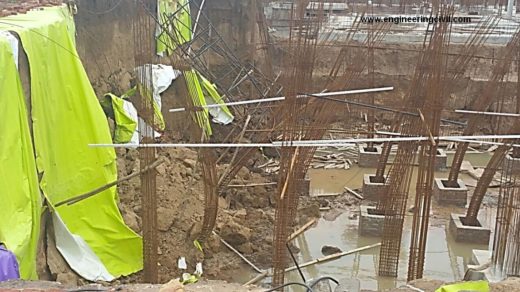
am just thankful for such posts